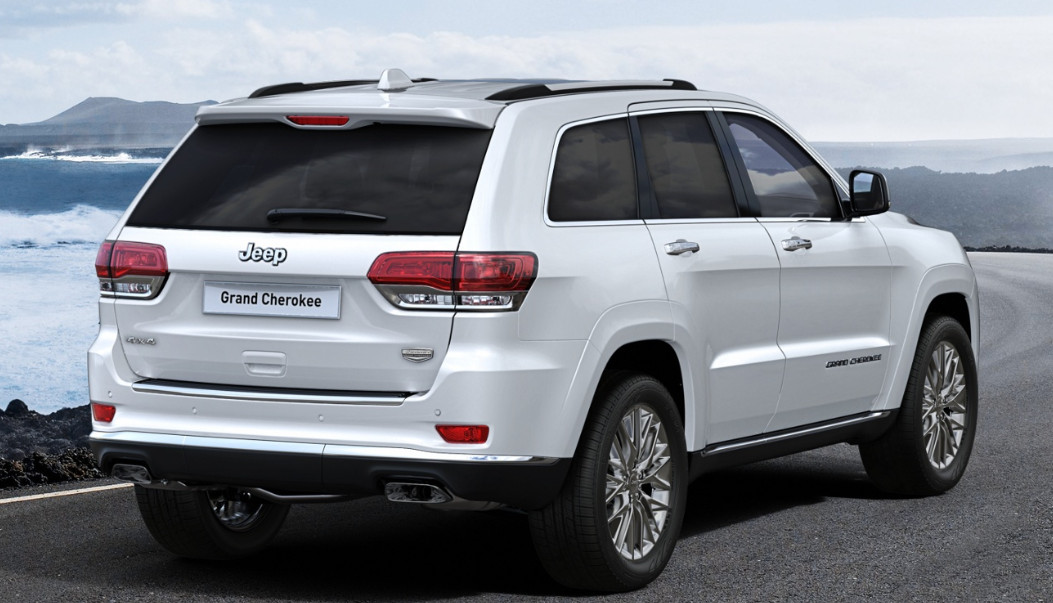Jeep Grand Cherokee Lease Estimate: Your Comprehensive Guide to Driving Home an Icon
Jeep Grand Cherokee Lease Estimate: Your Comprehensive Guide to Driving Home an Icon jeeps.truckstrend.com
The Jeep Grand Cherokee stands as a paragon of versatility, blending rugged off-road capability with refined on-road comfort and premium features. For many aspiring owners, the prospect of driving this iconic SUV is highly appealing, but outright purchase isn’t always the most practical or desired path. This is where understanding a Jeep Grand Cherokee Lease Estimate becomes invaluable. A lease estimate provides a clear, upfront financial projection of what it will cost to drive a new Grand Cherokee for a specified period, typically 2 to 4 years. It empowers consumers to budget effectively, compare various offers, and make informed decisions, ensuring they secure the best possible deal on their next adventure vehicle.
Understanding the Anatomy of a Lease Estimate
Jeep Grand Cherokee Lease Estimate: Your Comprehensive Guide to Driving Home an Icon
Before diving into specific numbers, it’s crucial to grasp the core components that shape any lease estimate. Unlike a traditional purchase where you pay for the entire vehicle, leasing means you are essentially paying for the vehicle’s depreciation during the lease term, plus a finance charge.
Here are the key elements:
- MSRP (Manufacturer’s Suggested Retail Price): This is the starting point, the full sticker price of the vehicle, including any options and packages. While a lease payment is calculated from the MSRP, the actual "capitalized cost" (the agreed-upon selling price) can often be negotiated lower.
- Capitalized Cost (Cap Cost): This is the negotiated price of the vehicle, similar to the purchase price. A lower cap cost directly translates to lower monthly payments.
- Capitalized Cost Reduction (Cap Cost Reduction): Any upfront payments you make, such as a down payment, trade-in equity, or rebates, reduce the cap cost, thereby lowering your monthly payments.
- Residual Value: This is the projected value of the vehicle at the end of the lease term, expressed as a percentage of the MSRP. A higher residual value is beneficial, as it means the vehicle is expected to depreciate less, leading to lower monthly payments.
- Money Factor (Lease Interest Rate): This is the finance charge of a lease, equivalent to an interest rate. It’s usually a very small decimal (e.g., 0.00150). To convert it to an approximate annual percentage rate (APR), multiply by 2400 (0.00150 * 2400 = 3.6% APR). A lower money factor means lower monthly payments.
- Lease Term: The duration of the lease, typically 24, 36, or 48 months. Shorter terms often have higher monthly payments but better residual values.
- Mileage Allowance: The maximum number of miles you are permitted to drive annually without incurring penalties. Common allowances are 10,000, 12,000, or 15,000 miles per year. Exceeding this limit results in overage charges, typically $0.15-$0.25 per mile.
- Acquisition Fee: A fee charged by the leasing company for setting up the lease.
- Disposition Fee: A fee charged at the end of the lease to cover the cost of cleaning and preparing the vehicle for resale. This can sometimes be waived if you lease another vehicle from the same manufacturer.
- Taxes and Other Fees: Sales tax on the monthly payment (in most states), registration fees, license fees, and documentation fees.


Why Consider Leasing a Jeep Grand Cherokee?
Leasing offers several compelling advantages, especially for a vehicle like the Grand Cherokee:
- Lower Monthly Payments: Generally, lease payments are significantly lower than loan payments for the same vehicle because you’re only paying for the depreciation, not the full purchase price.
- Access to New Models Frequently: Leasing allows you to drive a new Grand Cherokee every few years, ensuring you always have the latest features, technology, and safety advancements.
- Consistent Warranty Coverage: Your Grand Cherokee will typically be under the manufacturer’s warranty for the entire lease term, reducing unexpected repair costs.
- Less Hassle with Trade-Ins: At the end of the lease, you simply return the vehicle (subject to mileage and wear-and-tear conditions), avoiding the complexities of selling or trading in.
- Potentially Lower Maintenance Costs: Since you’re driving a new vehicle, major maintenance issues are less likely to arise during the lease term.
Key Factors Influencing Your Grand Cherokee Lease Estimate
The final lease estimate for your Grand Cherokee will hinge on several critical variables:
- Model and Trim Level: The Grand Cherokee comes in various trims (Laredo, Limited, Overland, Summit, Trackhawk, SRT, and the 4xe plug-in hybrid variants). Each has a different MSRP, directly impacting the capitalized cost and, consequently, the monthly payment. Higher trims will naturally lead to higher estimates.
- Market Conditions and Incentives: Manufacturer rebates, special lease programs, and dealer discounts can significantly lower the capitalized cost or money factor, making lease deals more attractive. These change monthly, so timing is crucial.
- Your Credit Score: A strong credit score (typically 700+) is essential for securing the lowest possible money factor, which directly reduces your monthly finance charge.
- Negotiation: Remember, the MSRP is a suggestion. You can negotiate the capitalized cost (the selling price of the car for the lease), just as you would for a purchase. You can also sometimes negotiate the money factor or the acquisition fee.
- Mileage Choice: Opting for a higher annual mileage allowance (e.g., 15,000 miles instead of 10,000) will increase your monthly payment. Be realistic about your driving habits to avoid costly overage charges.
- Upfront Payments: While a "zero down" lease is possible, making an upfront capitalized cost reduction (down payment) will lower your monthly payments. However, be cautious: if the vehicle is totaled early in the lease, you may lose some or all of this upfront money.
How to Get an Accurate Jeep Grand Cherokee Lease Estimate
Obtaining a precise lease estimate requires a multi-pronged approach:
- Utilize Online Calculators: Many automotive websites and even Jeep’s official site offer lease calculators. While these provide a good starting point, remember they are estimates and don’t account for all local taxes, fees, or specific dealer promotions.
- Contact Multiple Dealerships: This is the most effective way to get real-world estimates. Request detailed lease quotes for the specific Grand Cherokee trim and options you’re interested in, specifying your desired lease term and annual mileage.
- Understand Current Incentives: Research manufacturer websites and local dealer promotions. Special lease deals often come with reduced money factors or significant capitalized cost reductions.
- Know Your Credit Score: Before approaching dealers, know your credit score. This will help you understand what money factor you might qualify for and prevent surprises.
- Be Prepared to Negotiate: Don’t accept the first offer. Negotiate the capitalized cost as if you were buying the car outright. Also, inquire about the money factor and if it can be reduced.
Practical Tips for Lowering Your Lease Payment
- Target Lower Trim Levels: If budget is a primary concern, consider a Laredo or Limited trim instead of higher-end models like the Summit or SRT.
- Negotiate the Capitalized Cost: This is your biggest lever. Get the dealer to agree to a lower selling price for the vehicle.
- Improve Your Credit Score: A higher credit score unlocks lower money factors, saving you hundreds over the lease term.
- Look for Special Promotions: Dealers often run time-sensitive lease specials. Timing your lease during these periods can yield significant savings.
- Consider a Shorter Term with Higher Residual: Sometimes, a 24-month lease might have a much higher residual value than a 36-month lease, potentially offsetting the higher monthly payment due to faster depreciation.
- Be Realistic About Mileage: Choose the lowest mileage allowance that comfortably covers your driving habits. Every mile counts.
- Shop Around: Get quotes from at least three different dealerships to compare offers and leverage them against each other.
Common Pitfalls and How to Avoid Them
- Focusing Only on Monthly Payment: Don’t let a low monthly payment blind you. Always look at the total cost of the lease, including all fees (acquisition, disposition, taxes).
- Ignoring the Money Factor: Many lessees overlook this. Ask for it explicitly and understand its impact. It’s often negotiable.
- Underestimating Mileage: Be honest about your driving. Overage charges can quickly erase any savings from a lower mileage allowance.
- Neglecting Wear and Tear: Leased vehicles must be returned in good condition. Understand the leasing company’s wear and tear policy to avoid end-of-lease charges for excessive damage.
- Early Lease Termination Penalties: Breaking a lease early is almost always very expensive. Only consider it if absolutely necessary.
- Not Reading the Fine Print: Understand every clause in your lease agreement before signing.
Estimated Monthly Lease Payments for Jeep Grand Cherokee
Please note: These figures are estimates for a 36-month lease with 10,000 miles/year, excellent credit, and a typical due-at-signing amount (including first month’s payment, acquisition fee, and some fees). Actual costs will vary significantly based on trim, options, region, current incentives, money factor, and specific dealer offers. This table serves as a general guide.
| Trim Level | Estimated MSRP Range | Estimated Monthly Payment Range (36 mos / 10k miles) | Estimated Due at Signing Range (Excluding Taxes) |
|---|---|---|---|
| Grand Cherokee Laredo | $40,000 – $45,000 | $420 – $550 | $3,500 – $4,500 |
| Grand Cherokee Limited | $48,000 – $53,000 | $500 – $650 | $3,800 – $5,000 |
| Grand Cherokee Overland | $60,000 – $65,000 | $650 – $800 | $4,500 – $6,000 |
| Grand Cherokee Summit | $68,000 – $75,000 | $750 – $950 | $5,000 – $7,000 |
| Grand Cherokee 4xe (PHEV) | $60,000 – $80,000+ | $600 – $900+ (often better incentives) | $4,000 – $6,500+ |
Note on 4xe Models: Plug-in Hybrid Electric Vehicle (PHEV) models like the Grand Cherokee 4xe may qualify for specific federal tax credits or state incentives which can sometimes be "passed through" to the lessee as a reduction in capitalized cost, potentially making their lease payments more competitive despite a higher MSRP. Always inquire about current EV incentives.
Frequently Asked Questions (FAQ) about Jeep Grand Cherokee Lease Estimates
Q1: What is the main difference between leasing and buying a Grand Cherokee?
A1: When you lease, you pay for the depreciation of the vehicle during the lease term, plus finance charges. When you buy, you pay for the entire value of the vehicle over time, eventually owning it outright. Leasing typically results in lower monthly payments but no ownership at the end.
Q2: Can I negotiate the price of a Grand Cherokee when leasing?
A2: Yes, absolutely. You should always negotiate the "capitalized cost" (the vehicle’s selling price) as if you were buying it. A lower cap cost directly reduces your monthly lease payments. You can also try to negotiate the money factor or acquisition fee.
Q3: What happens at the end of a Grand Cherokee lease?
A3: You have several options: you can return the vehicle (and potentially lease a new one), purchase the vehicle at its residual value, or sometimes extend the lease for a short period.
Q4: What credit score do I need to get a good lease deal on a Grand Cherokee?
A4: Generally, an excellent credit score (typically 700 FICO or above) will qualify you for the best money factors and terms. Scores below 650 may result in higher money factors or require a larger down payment.
Q5: What are mileage overage charges?
A5: These are fees you pay for exceeding your agreed-upon annual mileage limit. For example, if your limit is 10,000 miles/year and you drive 12,000, you’ll be charged for the extra 2,000 miles at a rate specified in your contract (e.g., $0.20/mile).
Q6: Are there any "hidden" fees in a lease?
A6: While not hidden, fees like the acquisition fee (upfront), disposition fee (at lease end), and potential excess wear-and-tear or mileage charges are standard. Always ensure these are clearly outlined in your lease estimate and contract.
Q7: Can I lease a used Jeep Grand Cherokee?
A7: It’s very rare to lease a used vehicle directly from a dealership or manufacturer. Leasing programs are almost exclusively for new vehicles.
Q8: What is a "good" money factor?
A8: A good money factor is typically considered to be below 0.00200, which translates to an APR of less than 4.8%. The lower the better, as it directly impacts your finance charges.
Conclusion
Navigating a Jeep Grand Cherokee Lease Estimate might seem complex at first, but by understanding its core components and the factors that influence it, you empower yourself to make a financially sound decision. Leasing offers an attractive pathway to experience the luxury, capability, and innovation of a new Grand Cherokee without the long-term commitment of ownership. By meticulously researching, comparing offers from multiple sources, and leveraging negotiation tactics, you can secure a lease deal that perfectly aligns with your budget and lifestyle. Embrace the journey, and drive your dream Grand Cherokee with confidence and clarity.



